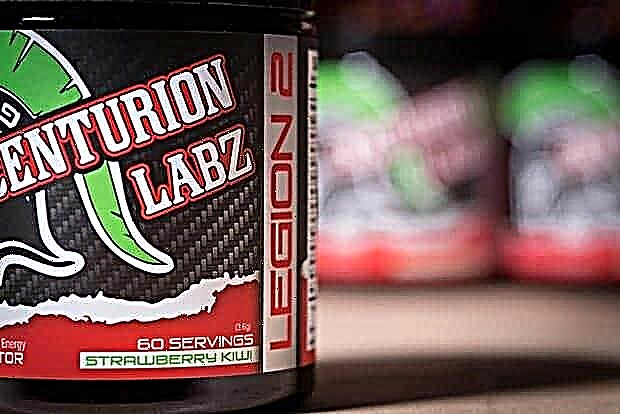Amino acids
2K 0 20.02.2019 (last revised: 19.03.2019)
Ornithine (L-ornithine) is a diaminovaleric nonessential aminocarboxylic acid, hepatoprotector, detoxifier and active metabolite. It is not included in the structure of proteins.
It activates the secretion of a number of hormones. Ornithine aspartate and ketoglutarate are components of some antibiotics.
Properties
Ornithine is characterized by a wide range of biological activity mechanisms:
- Can be converted to arginine, glutamine, proline, citrulline and creatine.
- Participating in the ornithine cycle, it favors the formation of urea.
- Activates lipolysis and synthesis of niacin.
- Participates in the genesis of insulin and melatonin and growth hormone, stimulating their secretion.
- It has a sedative effect.
- Stimulates anabolism, promotes muscle growth.
- Strengthens the regeneration of hepatocytes and connective tissue cells.
- In the process of urea formation, it takes part in the utilization of ammonia.
- Regulates hematopoiesis and glucosemia.
Application in sports
Athletes use ornithine to:
- increased lipolysis during drying;
- gaining muscle mass;
- activation of oxidation processes;
- following the Ducan diet.
The substance has gained popularity in nutrition schemes for its ability to enhance the excretion of metabolic products, in significant quantities formed during exercise, as well as stimulating the production of insulin and growth hormone, which contribute to muscle growth.
How to take ornithine
Features of use are dictated by the specifics of the produced form of the supplement. You should first consult with a specialist.
Ornithine capsules and tablets are taken 3-6 g after meals. These forms should be taken with water or juice.
With the parenteral form of administration, 2-6 g of the active substance are usually used:
- intramuscularly - the daily dose ranges from 4 to 14 g (for 2 injections);
- intravenous jet - 4 g per day are used (for 1 injection);
- infusion - 20 g of amino acids are dissolved in 500 ml, the rate of administration is 5 g / hour (the maximum daily dosage should not exceed 40 g).
The instructions for use, therefore, are mandatory for preliminary study. The average duration of the course is 2-3 weeks.
Ornithine in foods
The amino acid is found in royal jelly of bees, bee drone brood, pumpkin seeds, hazelnuts and walnuts. Ornithine is formed by endogenous reactions from arginine, which is found in eggs, meat and fish products.

© Michelle - stock.adobe.com
Contraindications
The amino acid is not recommended for use when:
- pregnancy and lactation;
- under the age of 18;
- low systemic blood pressure;
- renal failure;
- hypersensitivity or the presence of immunopathological reactions to the components of the drug;
- exacerbation of herpes;
- mental illness.
Overdose and side effects
It is extremely rare possible:
- the occurrence of dyspeptic symptoms (nausea, vomiting or diarrhea);
- decreased concentration of attention and speed of motor reactions (for this reason, when using a means of driving a car, it is better to refrain from driving);
- the appearance of shortness of breath and chest pain (like angina pectoris).
Interaction
In combination with other aminocarboxylic acids, ornithine is able to enhance its effect.
Ornithine and Lysine
L-ornithine and L-lysine, when used together, enhance metabolism, regenerative processes and hepatoprotective effect. In addition, Lysine helps assimilate Ca and induce growth hormone synthesis.
Arginine, ornithine, and lysine when combined significantly increase the effectiveness and benefits of training.
Ornithine and Arginine
The combination of these aminocarboxylic acids promotes muscle gain.
Combination with other substances
Combination with niacinamide, Ca, K, pyridoxine and ascorbic acid enhances the synthesis of growth hormone (especially if the amino acid is taken at night), and the simultaneous use of arginine and carnitine enhances lipolysis.
Incompatibility
Ornithine is incompatible with:
- benzylpenicillin benzathine;
- diazepam;
- rifampicin;
- phenobarbital;
- ethionamide.
Analogs
For liver pathologies, analogs can be used:
- The artichoke is characterized by choleretic, antioxidant and diuretic effects.
- Silymarin (milk thistle extract), which enhances the regenerative capacity of the liver.
- Indole-3-Carbinol, which exhibits detoxification and antiradical effects.

© M.studio - stock.adobe.com
Note
In nature, there are L and D forms of ornithine. The L-isomer is important for the human body.
The substance is not recommended to be washed down with milk.
In order to stimulate the secretion of growth hormone, it is advisable to use the amino acid at night.
The cost of an amino acid in pharmacies can vary markedly. You can purchase goods at reasonable prices on the manufacturers' websites.









